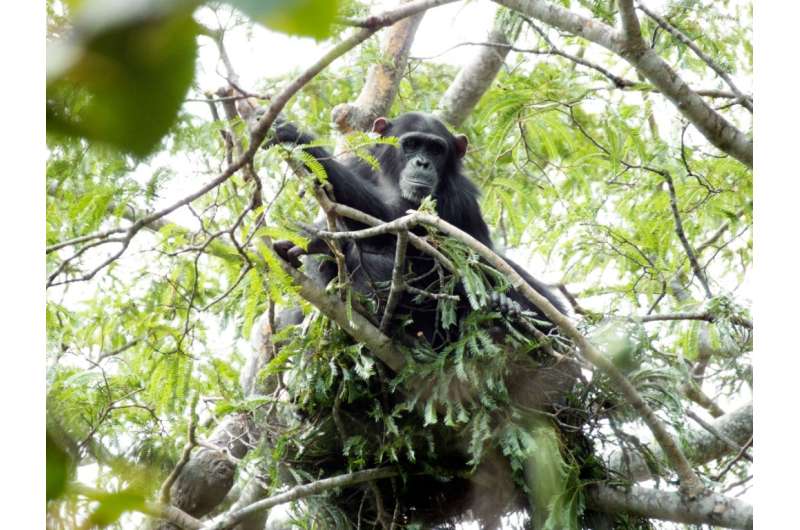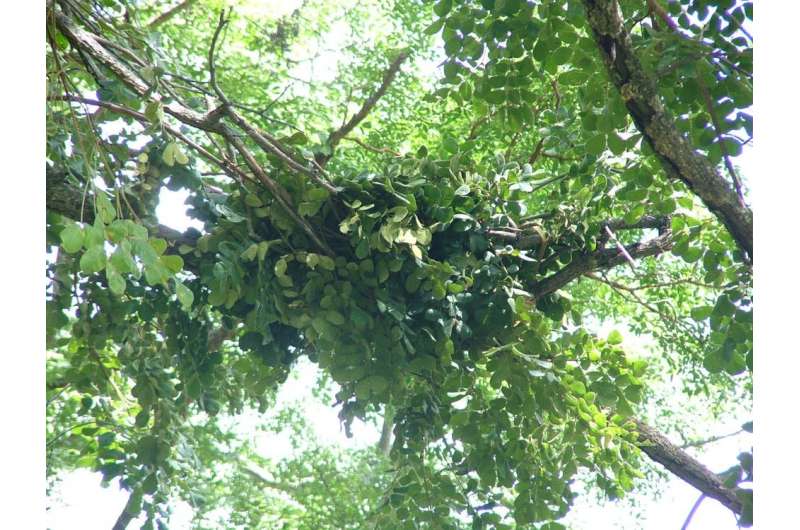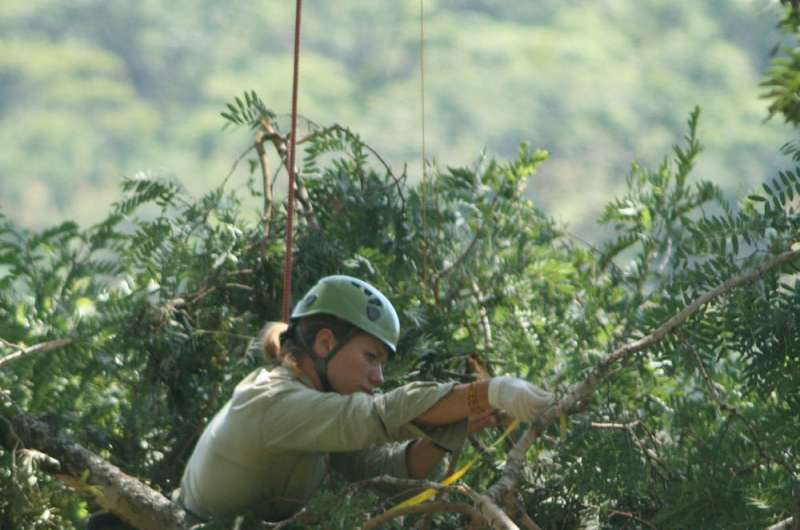Chimpanzee 'nests' shed light on the origins of humanity

Home is where the heart is, they say. But a chimpanzee's home may be where we can find the origins of the entire human species.
The style of home that people live in reflects much about where they live. Inuit homes are built to withstand bitter winters, for instance, whereas ancient Chinese dwellings allow drafts in when the weather is hot. Our recent research suggests that chimpanzees also adjust their sleeping spaces in response to their environment, especially fluctuating temperatures – as did our ancestors.
Chimpanzees are our closest living relatives, and observing them in the wild helps us reconstruct how our ancestors adapted to a changing environment millions of years ago. After all, anatomical and behavioural evidence from fossils of early hominins like Australopithecus and Ardipithecus suggests that they more closely resemble modern chimpanzees than modern humans. In fact, Australopithecus, which lived from about 3.5m years ago to about 2m years ago, walked upright but still had a body well adapted for life in the trees.
To help add context to the fossil remains of our ancestors, anthropologists have often drawn on insights from chimpanzee behaviour, which usually stem from directly observing the animals. But, like humans, chimps also leave an archaeological record, material remains of their recent activity. For instance, scientists have used forensic techniques to extract DNA from chimpanzee termite fishing tools, which reveal who fished, where, and with whom – important details that cannot be gleaned from fossils.
But the most common example of chimpanzee tool use is bed construction. Some form of construction goes on right across the animal kingdom, from termite mounds that extend above and deep underground, to bowerbirds whose elaborate nests reflect the quality of their male builder. Great apes, however, are the only primates that build nightly beds, also called nests or sleeping platforms.
We still do not ultimately know why they do this, as apes do not raise their young in nests nor use them to attract mates as other species do. But we do know that nest building is complex, requiring a sequential combination of bending and breaking branches into a secure, safe, comfortable platform in trees.
Captive chimpanzees build higher-quality nests more efficiently if they have had exposure to experienced nest-builders early in life, indicating that this isn't purely instinctive – learning plays an important role.

Learning survival skills
In our research, we investigated variation in chimpanzee bed architecture across two dry habitats (Fongoli, Senegal, and Issa, Tanzania) in response to local weather conditions.
We found different building techniques were employed in response to local, overnight weather conditions. In cooler conditions the chimpanzees built thicker nests, in wet weather they added more broken branches for support and when it was windy they built their nests deeper and with larger supports.

How does this link to our ancestors? Given we know that all great apes build nests, and that many early hominins retained adaptations for tree-living such as feet that could grasp onto branches or food, it is likely that they also built varied nests. This would have helped them adapt to a changing landscape and an unpredictable climate during key periods of evolution. The ability to build cosy and also functional beds when required would have been a key buffer against colder temperatures on the drying savanna.
In evolutionary terms, there's a very long leap from architecturally-flexible nightly bed construction to an eventual investment in more permanent structures or "home bases", which appeared around 2m years ago. But these later bases are what today provide insight into more transformative hominin behaviours like the use of fire or social organisation, and these dramatic changes would not have been possible without the ability to construct reliable shelter. To gain a critical insight into our own evolution we must look at the "nests" built by early hominin species – and modern chimpanzees.
Provided by The Conversation
This article was originally published on The Conversation. Read the original article.![]()




















